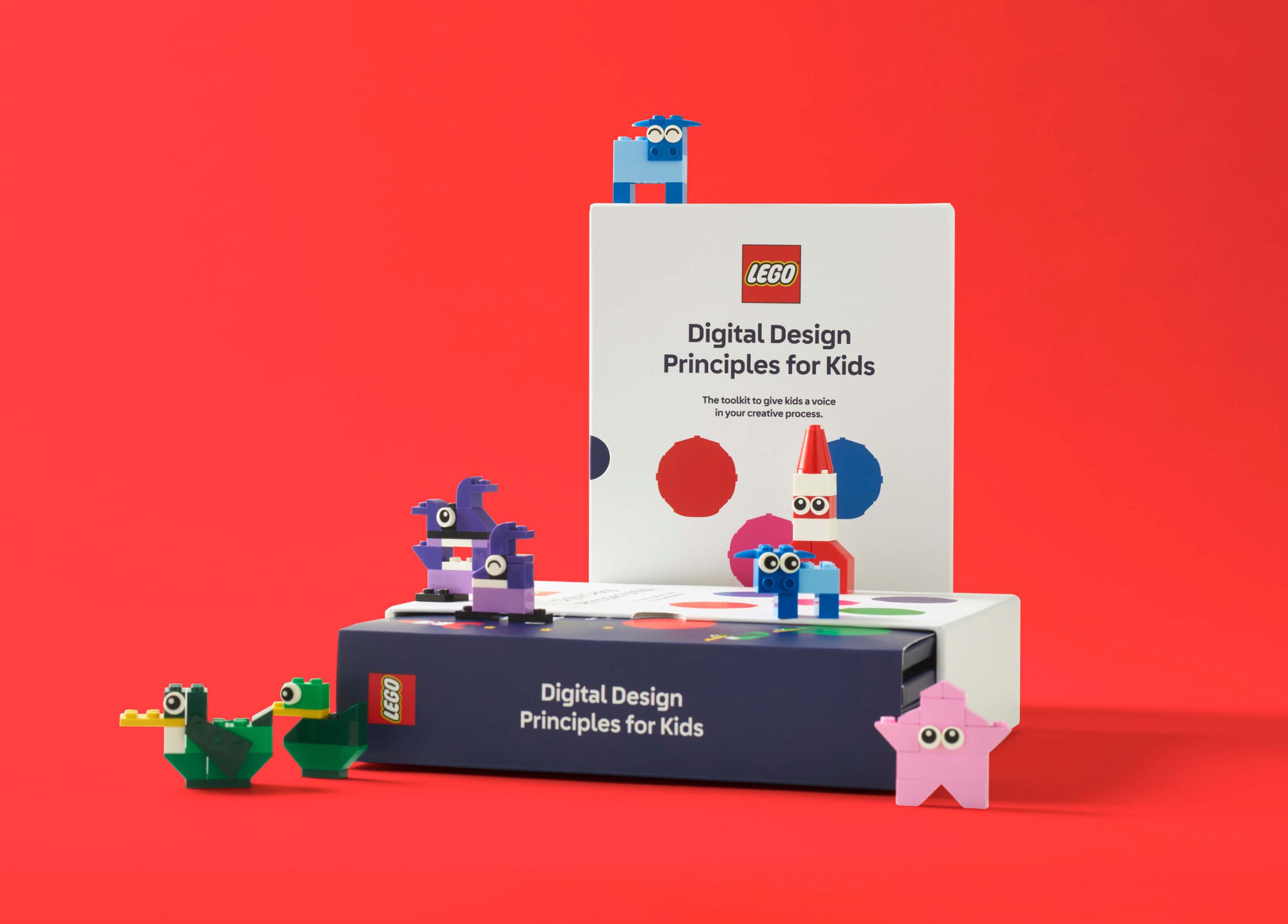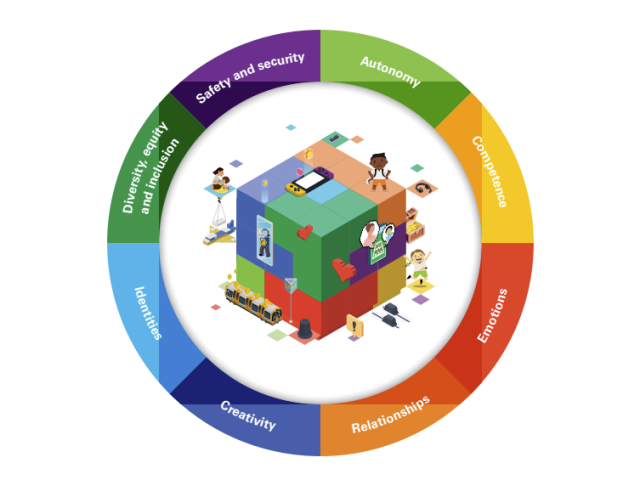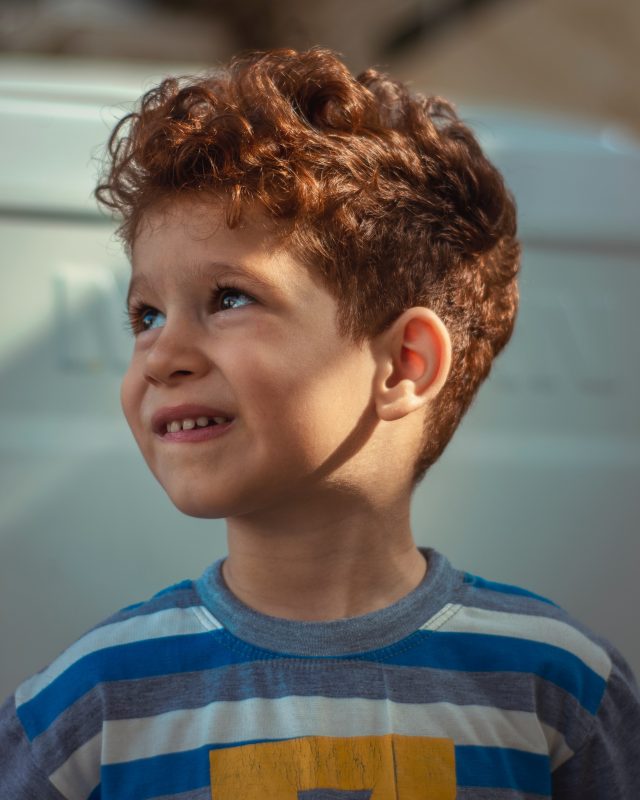
An except from an article by Michelle Lee, Partner & Managing Director, Play Lab at Ideo
As we explore best practices in digital thriving, we couldn’t help but think of the LEGO Group, a company that is at the forefront of thoughtfully designing engaging experiences for kids. Together, the LEGO Group and UNICEF (with funding from the LEGO Foundation), created the Responsible Innovation in Technology for Children (RITEC) project. Through deep research with children at schools and in homes around the world, the project created a toolbox for incorporating support for children’s well-being in the design process.
In addition to this important work, Senior Design Strategist Pia Breum Corlin led the creation of the LEGO Group’s own Digital Design Principles for Kids, which help shape every digital product the company creates. She and her team also developed one of the cooler design tools I’ve ever seen: a physical toolkit that leads designers through the process, helping them design for well-being and a diverse play experience. I caught up with her to learn more about the company’s approach to digital thriving, how M&Ms can help fuel the design process, and much more.
Michelle Lee: There are a lot of people who grew up with the LEGO brand, myself included, and we know it primarily as a company that makes toy bricks. But a lot of the work you’re doing has to do with digital play. Could you give an introduction to that work?
Pia Breum Corlin: At the LEGO Group, it’s not just about games; it’s about redefining play entirely. For kids, there’s no real distinction between physical and digital play—they naturally blend the two. That’s why we focus on hybrid play, where the physical and digital worlds intersect. That way, we don’t end up having kids just sitting in front of a screen—we actually foster their creativity.
Michelle Lee: What does that catalog of digital play look like?
Pia Breum Corlin: It’s actually quite big. It includes partnering with games, like with LEGO Fortnite, and also the LEGO Builder app, which is the digital version of the building instructions. We all know the paper version from our childhood. It’s very structured, starting with opening bag number one. It feels like something you do on your own. But the digital instructions let you open different bags, and then build small parts of something, which you can then pass off to someone else. It’s more like a board game. So you can suddenly have a set as a family and build together.
Michelle Lee: That sounds incredible. I’d love to learn a little bit more about your role as a design strategist. What does it look like? And how did you get here?
Pia Breum Corlin: My journey to this role is anything but linear. I am trained as a civil engineer in industrial design. It’s a mix between engineering, a lot of math, and design—focused on that intersection between the product and who is using it. That’s where design strategy came in—it taught me that design is more than making things pretty and pixel-perfect, and really about catering to a need.
I joined the LEGO Group about 10 years ago, and my real interest in play came when we started to create design principles to really understand what it is. I have a tendency to get deep into things that I design for—I really want to understand the user’s needs and the behavior behind them.
Michelle Lee: What led you to this path of wanting to focus on play and well-being within the LEGO Group?
Pia Breum Corlin: At the LEGO Group, everyone talks about digital well-being and thriving in everything we do. We don’t want to do any harm. We want kids to be in a better place after they use an app or product.
When we created LEGO Life, a social media app for LEGO fans, including kids, we wanted to have an internal language that designers could use to say, “Yes, we can do it from a legal perspective. But the big question is, should we? Does it fit into the ethics and well-being perspective that we are trying to promote?” So we created digital design principles that provide a really strong language for that.


